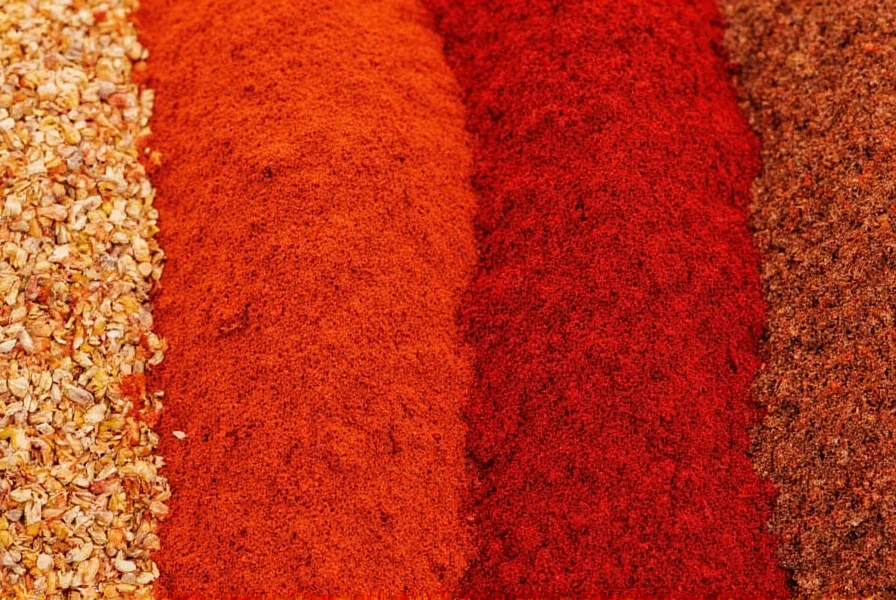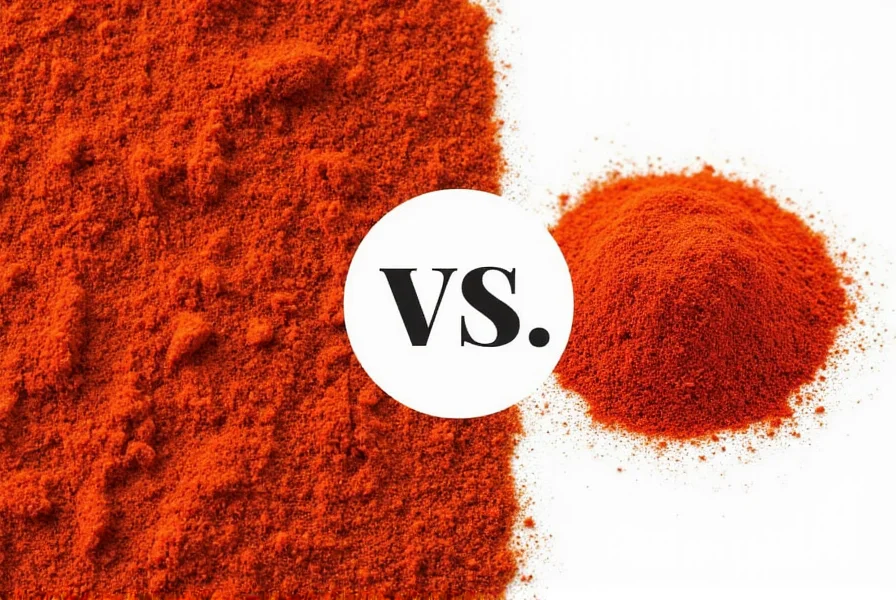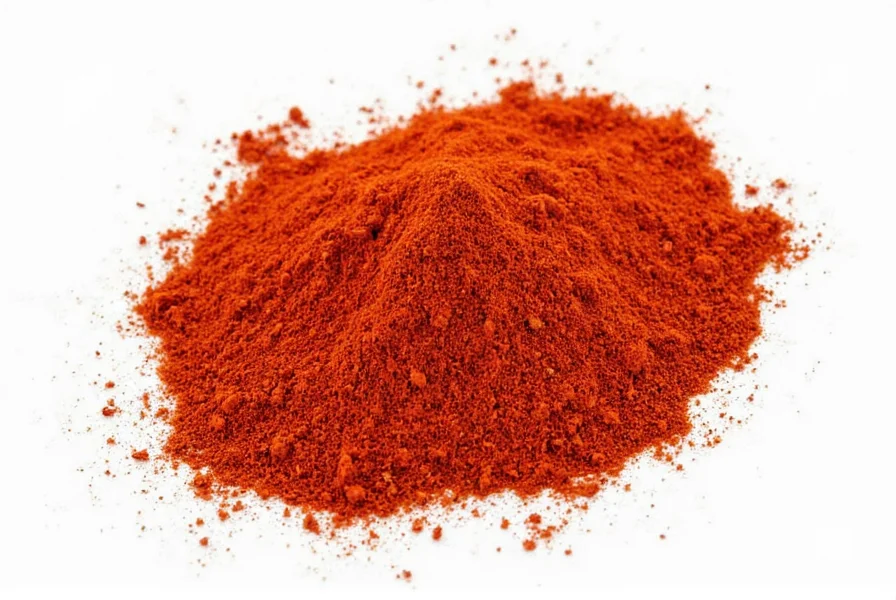Understanding the differences between paprika and cayenne is essential for home cooks and professional chefs alike. While both spices come from the Capsicum annuum family of peppers, their processing methods, flavor profiles, and culinary applications vary dramatically. This comprehensive guide explores when to use paprika or cayenne based on scientific analysis of their chemical composition, heat measurements, and traditional culinary applications across global cuisines.
Botanical Origins and Processing Methods
Paprika originates from sweet or mild chili peppers that are dried and ground into a fine powder. Traditional Hungarian paprika undergoes a specific process where peppers are smoked over oak fires, contributing to its distinctive flavor. The color ranges from bright red to deep orange depending on the pepper variety and ripeness at harvest.
Cayenne pepper, by contrast, is made from Capsicum frutescens varieties that are significantly hotter. The peppers are typically dried and ground without additional processing, preserving their intense heat. Unlike paprika which can be sweet, smoked, or hot varieties, cayenne consistently delivers high heat levels.

Heat Level Comparison: Scientific Analysis
The most significant difference between paprika or cayenne lies in their capsaicin content, measured using the Scoville Heat Unit (SHU) scale:
| Spice Type | Scoville Heat Units | Heat Perception | Common Culinary Uses |
|---|---|---|---|
| Sweet Paprika | 100-500 SHU | Mild, sweet, no noticeable heat | Coloring soups, stews, deviled eggs |
| Hot Paprika | 1,000-2,000 SHU | Moderate warmth | Spanish chorizo, Hungarian goulash |
| Cayenne Pepper | 30,000-50,000 SHU | Intense, immediate heat | Hot sauces, Cajun seasoning, spice rubs |
This substantial difference in heat intensity means paprika and cayenne serve fundamentally different purposes in cooking. Substituting one for the other without adjustment will dramatically alter a dish's flavor profile. When comparing paprika vs cayenne heat levels, remember that one teaspoon of cayenne equals approximately 15-20 teaspoons of sweet paprika in heat intensity.
Culinary Applications: When to Choose Paprika or Cayenne
Choose paprika when:
- You need vibrant red color without significant heat (sweet paprika)
- Creating traditional Hungarian, Spanish, or Portuguese dishes
- Adding subtle smokiness to barbecue recipes (smoked paprika)
- Enhancing flavor in dishes where heat would overpower other ingredients
- Preparing dishes for children or those sensitive to spice
Choose cayenne when:
- You need consistent, significant heat in sauces and marinades
- Preparing Cajun, Creole, or Szechuan cuisine
- Adding kick to meat rubs or spice blends
- Creating hot sauces or spicy condiments
- When a recipe specifically calls for cayenne's distinctive heat profile
Substitution Guidelines for Paprika and Cayenne
While paprika and cayenne aren't direct substitutes, understanding paprika vs cayenne conversion ratios helps when ingredients are unavailable:
- Substituting paprika for cayenne: Use 3-5 teaspoons of hot paprika for every 1/4 teaspoon of cayenne. Note this won't provide equivalent heat but will add some warmth and color.
- Substituting cayenne for paprika: Use 1/16 teaspoon cayenne plus 1 teaspoon sweet paprika for every 1 teaspoon paprika required. This maintains color while adding minimal heat.
- For color without heat: Consider tomato powder or beet powder as alternatives when paprika is unavailable.
Professional chefs emphasize that understanding when to use paprika instead of cayenne prevents culinary disasters. As Chef Elena Rodriguez notes, “I've seen many home cooks ruin delicate sauces by substituting cayenne for paprika without adjusting quantities. The heat difference isn't linear—it's exponential.”
Nutritional Profiles and Health Considerations
Both spices offer health benefits but with different nutritional emphases:
- Paprika: Higher in vitamin A (as beta-carotene), providing antioxidant benefits. Sweet paprika contains approximately 2,500 IU of vitamin A per teaspoon.
- Cayenne: Contains higher capsaicin levels, which studies show may boost metabolism and reduce inflammation. Research published in the Journal of Nutritional Science indicates cayenne consumption can increase thermogenesis by up to 25%.
Those with sensitive digestive systems should exercise caution when choosing between paprika or cayenne. While sweet paprika rarely causes issues, cayenne can trigger heartburn or gastric discomfort in susceptible individuals.

Storage and Shelf Life Considerations
Proper storage affects the potency of both spices:
- Store both in airtight containers away from light and heat
- Paprika retains color and flavor for 18-24 months when properly stored
- Cayenne maintains heat intensity for 24-36 months
- Freezing extends shelf life but may cause clumping
- Test potency by rubbing a small amount between fingers—fresh paprika should leave vibrant color, while fresh cayenne produces noticeable warmth
Food scientists recommend labeling spice containers with purchase dates, as faded color in paprika or diminished heat in cayenne indicates reduced potency. This knowledge helps determine whether to use paprika or cayenne at their peak effectiveness.
Global Variations and Quality Indicators
Understanding regional differences helps when selecting between paprika or cayenne:
- Hungarian paprika: Protected designation of origin (PDO) with 8 distinct varieties from sweet to hot
- Spanish paprika (pimentón): Often smoked over oak, available in sweet (dulce), bittersweet (agridulce), and hot (picante) varieties
- Cayenne sources: Louisiana cayenne tends to be fruitier, while African varieties offer sharper heat
When evaluating quality for paprika vs cayenne, look for vibrant color (dull powder indicates age), fine texture without clumps, and strong aroma. Premium paprika should smell sweet and earthy, while quality cayenne emits a sharp, pungent scent.
Common Misconceptions Clarified
Several myths persist about paprika and cayenne:
- Myth: All paprika is mild Fact: Hot paprika varieties exist and can approach mild cayenne heat levels
- Myth: Cayenne is just hot paprika Fact: They come from different pepper varieties with distinct chemical compositions
- Myth: The terms are interchangeable in recipes Fact: Substituting without adjustment usually ruins dish balance
- Myth: Red pepper flakes equal cayenne Fact: Flakes contain seeds and membranes, making them hotter than pure cayenne powder
Practical Application Guide
Use this decision tree when choosing between paprika or cayenne:
- Is heat the primary goal? → Choose cayenne
- Do you need vibrant red color without significant heat? → Choose sweet paprika
- Are you making traditional Hungarian or Spanish cuisine? → Choose appropriate regional paprika
- Do you need smokiness? → Choose smoked paprika (pimentón)
- Is the recipe from Louisiana or requiring intense heat? → Choose cayenne
Professional food developers recommend keeping both spices in your pantry but using them intentionally. As culinary expert Michael Chen explains, “The difference between paprika vs cayenne isn't just about heat—it's about flavor architecture. Paprika builds foundation, while cayenne provides accent notes.”











 浙公网安备
33010002000092号
浙公网安备
33010002000092号 浙B2-20120091-4
浙B2-20120091-4